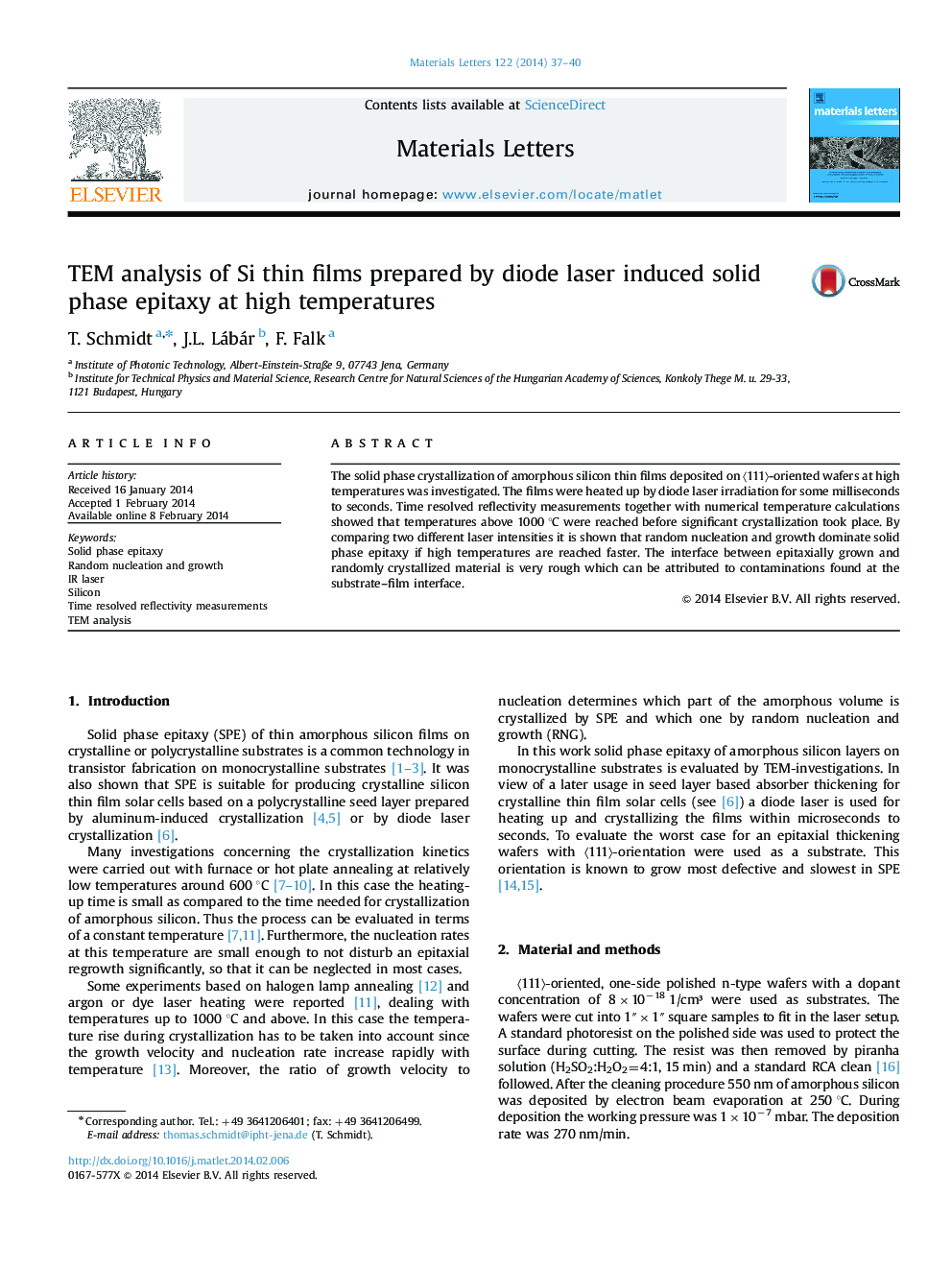| Article ID | Journal | Published Year | Pages | File Type |
|---|---|---|---|---|
| 8020664 | Materials Letters | 2014 | 4 Pages |
Abstract
The solid phase crystallization of amorphous silicon thin films deposited on ã111ã-oriented wafers at high temperatures was investigated. The films were heated up by diode laser irradiation for some milliseconds to seconds. Time resolved reflectivity measurements together with numerical temperature calculations showed that temperatures above 1000 °C were reached before significant crystallization took place. By comparing two different laser intensities it is shown that random nucleation and growth dominate solid phase epitaxy if high temperatures are reached faster. The interface between epitaxially grown and randomly crystallized material is very rough which can be attributed to contaminations found at the substrate-film interface.
Related Topics
Physical Sciences and Engineering
Materials Science
Nanotechnology
Authors
T. Schmidt, J.L. Lábár, F. Falk,
